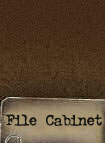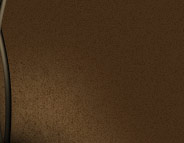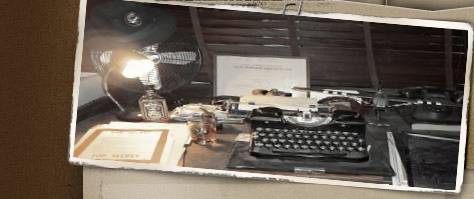|

File No.: Battle Relic # 31
Title: "World War Two US
Helmet of an Eindhoven Irregular"
Investigation made at: The
Netherlands
Period Covered: 18SEP1944 -
06NOV1945
Date: 27OCT2021
GPS Location: N/A
Case Classification:
Description of a World War Two US
Army M1 Steel Helmet
Case Status: Case Closed
REASON FOR INVESTIGATION:
This agency received information
about the current location of an
American M1 steel helmet worn by
Piet "Pete "Luiten", a Dutch
citizen of Eindhoven who had joined
the 506th Parachute Infantry
Regiment of the 101st Airborne
Division on the day his hometown was
liberated by that unit. Pete went on
to serve as an interpreter and POW
interrogator, got WIA and climbed to
the rank of 1LT before being
discharged at the end of WWII in the
ETO. The owner, whose identity will
remain undisclosed here, kindly showed
this remarkable relic to this
agency. |
(click to enlarge)
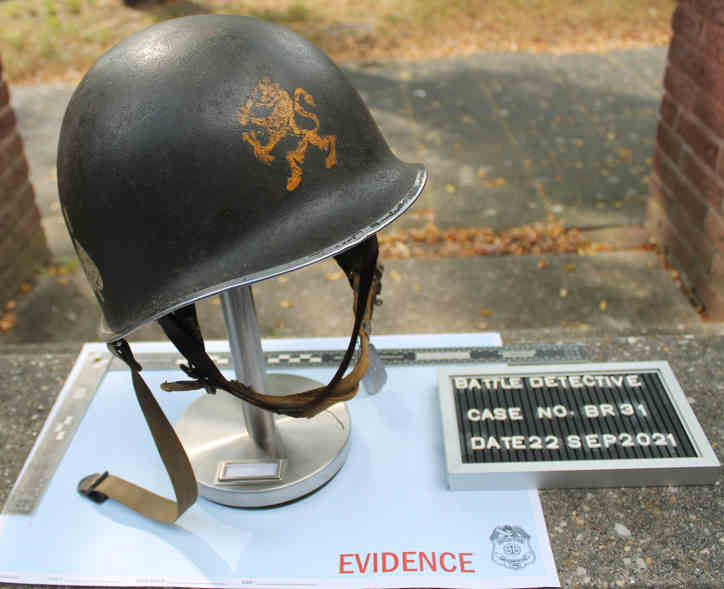
"Pete" Luiten's
American helmet with Dutch lion |
|
SYNOPSIS:
The WW2 story of the original owner
of the helmet, the late Mr. Peter H.
Luiten from Eindhoven, can be read
in the file author Cornelius Ryan
compiled about Pete's twin brother
Kees.
In the 1970's Ryan did research for
his book A bridge Too Far and
contacted Pete's brother who, in
turn provided Ryan with a typed
report of Pete's exploits as an
interpreter for the 506th Parachute
Infantry Regiment (PIR).
Click
here for the file which can be
found online in the collection of
Ryan’s research material kept by the
University of Ohio.
The report paints a picture of the
adventures of Pete Luiten and
renders clues about details and
features of the helmet described as
a Battle Relic here. |
Eindhoven "Irregular"
Pete Luiten also has a role in
the book
"Sent by the Iron Sky" by author Ian
Gardner:
"22-year-old Piet Luiten was a
civilian and came from the Stratum
district of Eindhoven. Pete was one
of many Dutch kids who joined the
Americans (and British) in Eindhoven
to become what was known as
"irregulars". Pete spoke several
languages and initially worked with
Second Battalion, 81 mm Mortar
Platoon, as their interpreter. By
late September, he was promoted to
"lieutenant" and reassigned to the
IPW team before being wounded at
Opheusden. After spending several
months in hospital, Pete managed to
hitchhike back to the regiment and
rode down to Alsace where his
excellent command of German and
French would come in mighty useful."
- Page 212 of
“Sent by the Iron Sky”, “The legacy
of an American Parachute Battalion
in WWII”
by Ian
Gardner, Osprey Publishing 2019,
ISBN 978 1 472837387 |
|
(click to enlarge)
.jpg)
Piet "Pete" Luiten; right, back row
Camp Mourmelon, France 1945
Photo by John Phillips; courtesy of
Ian Gardner |
|
Investigative leads
Important dates and events from the
Luiten file in the Cornelius Ryan
collection are:
- Several days after the Germans cut
the road to Arnhem at Koevering in
the sector of the American 101st
Airborne Division on 24SEP1944 Pete
"looked more like a real G.I.
with my beaten up helmet" (page
2);
- On approximately 08OCT1944 was WIA
in his hand and after release from
the hospital he had with him his "helmet
with shrapnel hole" (page 3);
These entries suggest that Pete had
a different helmet prior to the one
owned by our contact.
- On 03JAN1945 Pete was officially
detached from the Netherlands
Military to the 101st Airborne
Division's 506th PIR as part of the
Allied 21st Army Group.
- That month COL Sink, CO of the
506th PIR, recommended that Pete
would be commissioned as a 2LT by
the Netherlands military but Pete
did not have the required proof
because he lost his wallet earlier;
- Pete arrived in Mourmelon, France
in late FEB1945 where he worked on a
Courts Martial investigation into a
blown and looted safe in Holland by
members of the 501st PIR.
This may well be one of the safes
described by this agency in
Case File
# 13;
- Pete arrived in Auxerre, France on
10AUG1945 to rejoin the 101st
Airborne Division where, on the next
day, started acting as interpreter in
a Provost Marshal investigation;
- In OCT1945 Pete made a parachute
jump and unofficially received his
jump wings;
For such a jump Pete needed a
parachutist’s helmet featuring a
liner with "A" yokes and chin strap.
- Pete was with the 506th PIR when
it reached Berchtesgaden in Germany
and Hitler's Berghof and Eagle's
Nest near the end of the war;
- Pete is discharged from the
Netherlands military on 06NOV1945
and signed his report as "sgt. Peter
H. Luiten" on 17APR1946. |
Description of "Pete" Luiten's
Helmet
American M1 helmets typically
are a combination of two
"one-size-fits-all" helmets: an
outer metal shell and a hard
hat–type liner nestled inside it
with an adjustable suspension
system. The outer shell should not
be worn by itself but the liner can
be as it provides protection similar
to a hard hat. The liner is
sometimes worn in U.S. military
ceremonies and parades, painted
white, chromed or, as with this
particular liner, given a shiny
finish.
The depth of the helmet is 7 inches
(180 millimeter), the width is 9.5
inches (240 millimeter), and length
is 11 inches (280 millimeter), the
thickness is 1/8 inch (3
millimeter).
The weight of a World
War II–era M1 helmet is
approximately 2.85 pounds (1.29
kilograms), including the liner and
chinstrap.
Steel outer shell
Pete Luiten's helmet has the
number
"795D" stamped on the inside
indicating that it was made by the
McCord Radiator and Manufacturing
Company of Detroit, Michigan in the
first Quarter of the year 1944.
On the front of the helmet an orange
rampart (standing) lion, the
heraldry symbol of the Dutch armed
forces, is painted. Both sides
feature a painted white spade symbol
with a 'tic' mark on the twelve
o'clock position signifying
Headquarters Company of the 506th
Parachute Infantry Regiment. On the
rear of the steel shell we found a
vertical white Non-Commissioned
Officers or "follow me-" bar which
is consistent with Pete's rank of
SGT. Closer inspection revealed that
it is made of the residue of,
presumably, white adhesive engineer
or medical tape.
Above the NCO bar, slightly on the
right of the center, is a small
indentation most likely caused by a
forceful impact on the helmet. |
|
(click to enlarge) |
|
_small.jpg)
_small.jpg)
_small.jpg)
_small.jpg)
_small.jpg)
SGT Pete Luiten's M1 Steel helmet |
Liner
Pete's liner is made by the
Westinghouse Electric &
Manufacturing Company designed for
use by paratroopers and has a
different construction than regular
liners. The piece of webbing which
holds the nape strap at the back of
the wearer's neck is extended around
the sides of the liner and
terminated on each side in "A"
shaped yokes which hang down below
the liner's rim and has buckles for
an adjustable chin cup. In Pete's
liner the parachutist's chin strap is made of
fabric. Two female snaps on the
inside of the liner above the "A"
yokes accept male snaps on each of
the steel shell's chinstraps, and
help to keep the liner inside the
steel shell during abrupt or violent
movements.
|
|
(click to enlarge)
_small.jpg)
_small.jpg)
_small.jpg)
_small.jpg)
SGT Pete Luiten's helmet liner
with Westinghouse logo stamped
inside |
|
The liner is coated with a shiny
olive green substance presumably for
parade use. Before the finish dried
someone must have handled the liner
because it shows distinct
fingerprints; perhaps Pete's.
Only the sides of the liner are
marked with the white spade symbols
and tics that are also on the steel
shell; although smaller in size. |
|
(click to enlarge)
.jpg)
.jpg)
Fingerprints in the green finish
_small.jpg)
_small.jpg)
_small.jpg)
_small.jpg)
Liner seen from
all sides |
Parades
On page 11 of his report in the
Cornelius Ryan Collection Pete
describes the Independence Day
festivities of the 506th PIR in
JUL1945 which included a parade.
This may have been the occasion when
Pete wore his helmet liner with the
shiny finish. |
|
(click to enlarge)
_small.jpg) _small.jpg) _small.jpg)
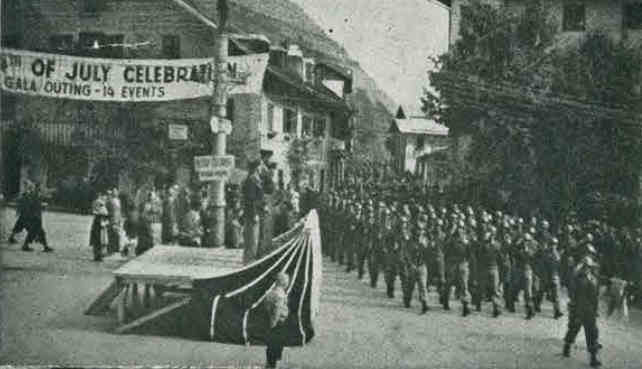
Parade photo from
the "Currahee Scrapbook" of the
506th PIR |
|
Photographic evidence of similar
parades by the 101st Airborne
Division held in Camp Mourmelon,
France shows troopers wearing their
steel outer helmets with their
liners invisible.
(click to enlarge)
.jpg)
General Dwight D.
Eisenhower inspects paratroopers
of the 101st Airborne Division in
Mourmelon, France
during the award ceremony for the
Presidential Unit Citation in 1945 |
During a parade in Reims on
07MAY1945 troopers of the 101st wore
their garrison caps.
Another possible parade in which
Pete could have worn his shiny liner
could be the one held in Auxerre,
France. Photos of that parade show
Screaming Eagles of the 101st
Airborne Division parading while
wearing shiny helmet liners. |
|
(click to enlarge)
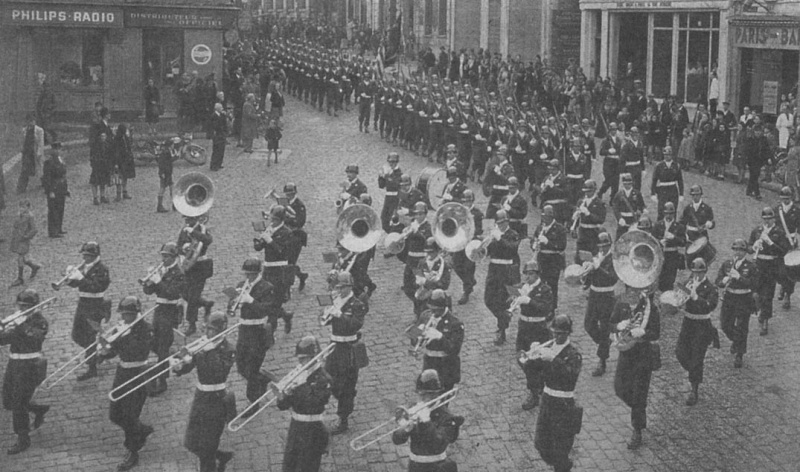
Parade
of the
101st Airborne Division in Auxerre,
France |
|
Pete's "Dog Tag" The helmet
was acquired together with one US
Army identification disc, also known
as "dog tag".
It has the following inscription: |
|
L |
U |
I |
T |
E |
N |
, |
P |
E |
T |
E |
R |
|
H |
|
|
|
|
|
1 |
0 |
2 |
8 |
8 |
2 |
|
N |
E |
T |
H |
. |
F |
O |
R |
C |
E |
S |
|
A |
T |
T |
A |
C |
H |
E |
D |
|
U |
S |
|
A |
R |
M |
Y |
|
A |
|
|
|
|
|
|
|
|
|
|
|
|
|
|
|
|
|
|
|
|
|
|
|
|
|
|
|
|
|
|
|
|
|
|
|
C |
|
|
|
The letter "A" at the end of the 3rd
line indicates Pete's blood type.
Although discovered in 1937, Rhesus
factors weren't listed on WW2 dog
tags.
The letter "C" in the last line
signifies Pete's Catholic religion.
From the report typed by Pete Luiten
himself we theorize that this dog
tag was embossed for Pete after he
was officially attached to the 21st
Army Group on 03JAN1945. |
Exhibits:
We are very thankful to the current
owner of Pete Luiten's helmet and
dog tag and consider it a privilege
to describe and display it here a
Battle Relic #31.
We close with two photos from the
front of SGT Peter H. Luiten's
helmet and his dog tag. |
|
(click to enlarge)
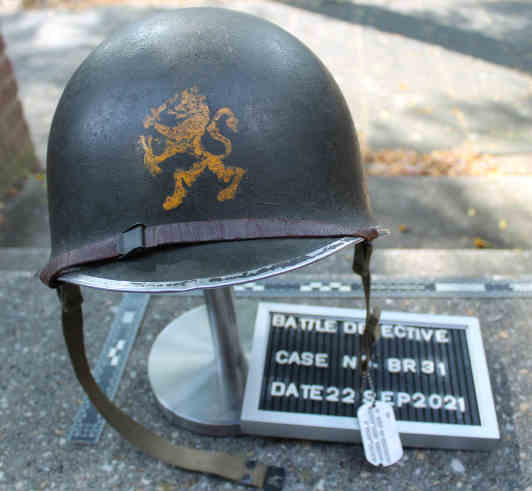 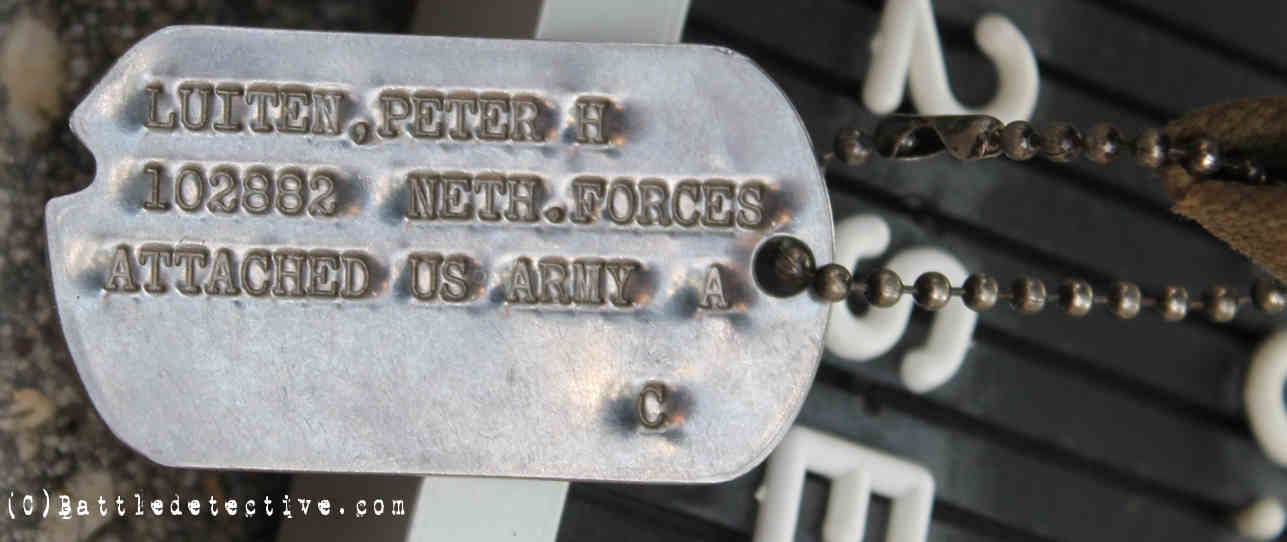 |
|
 |
|
Back to Battlerelics
 |
|
|


